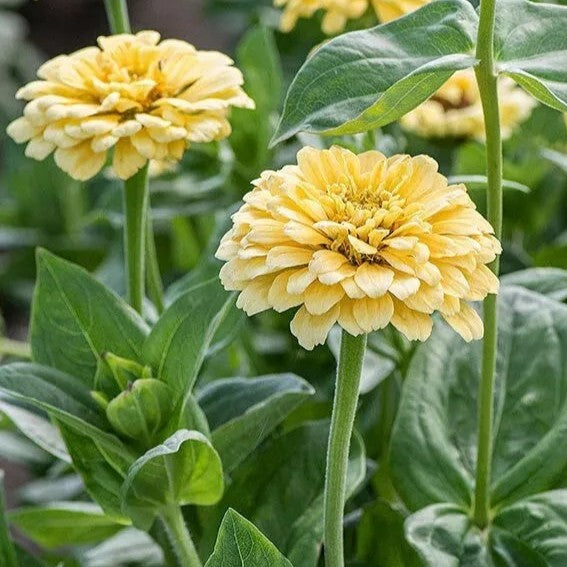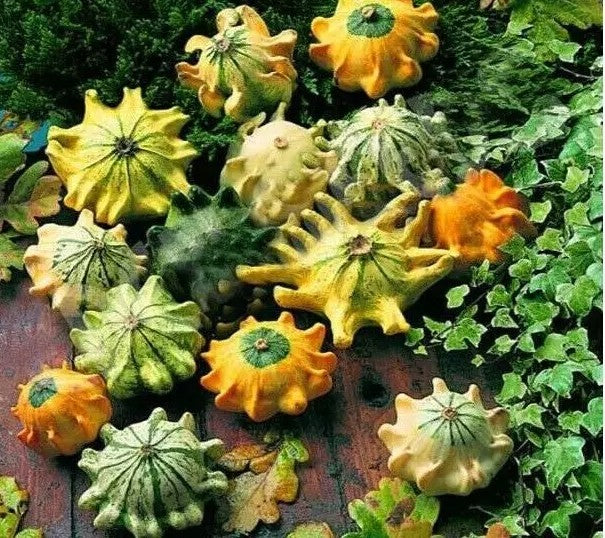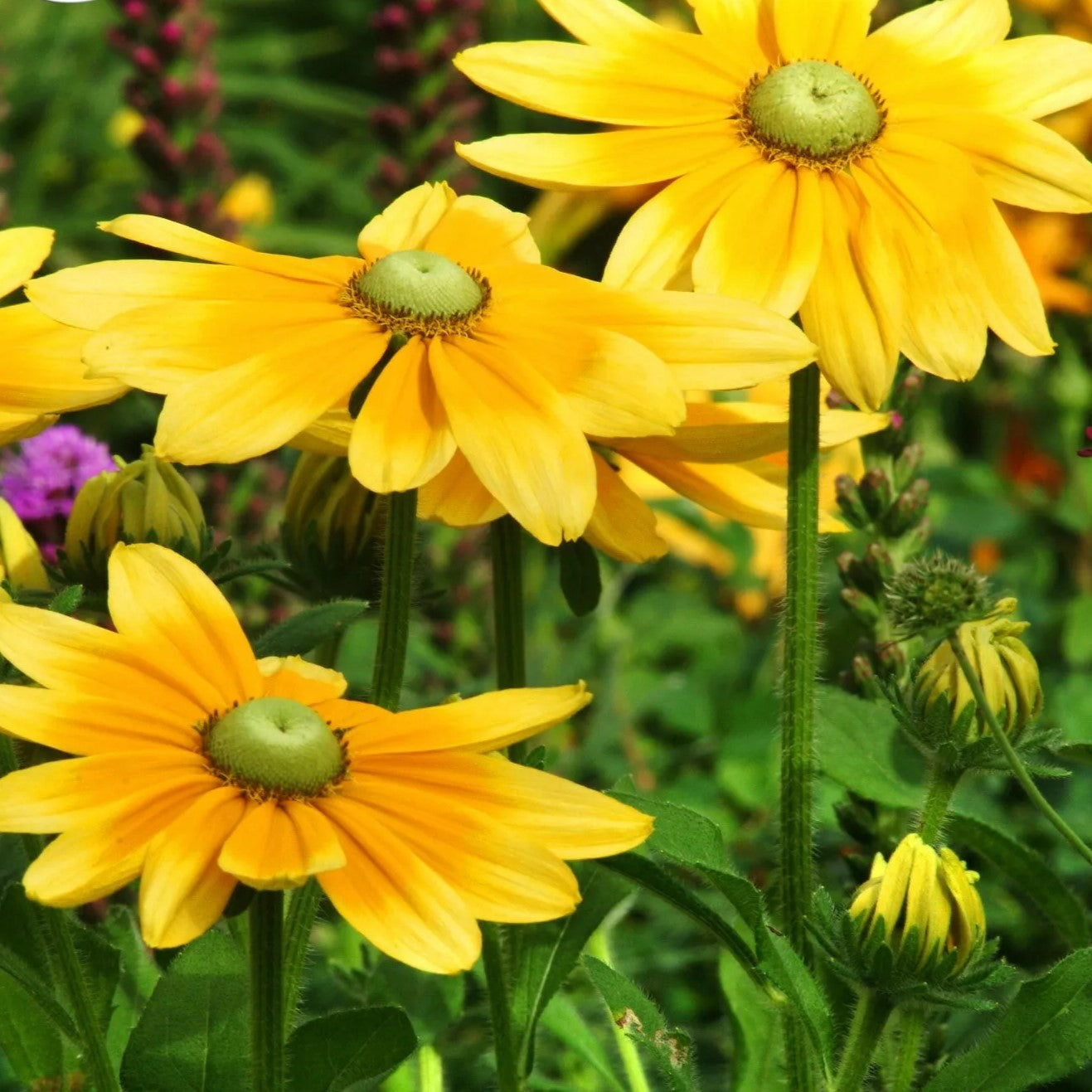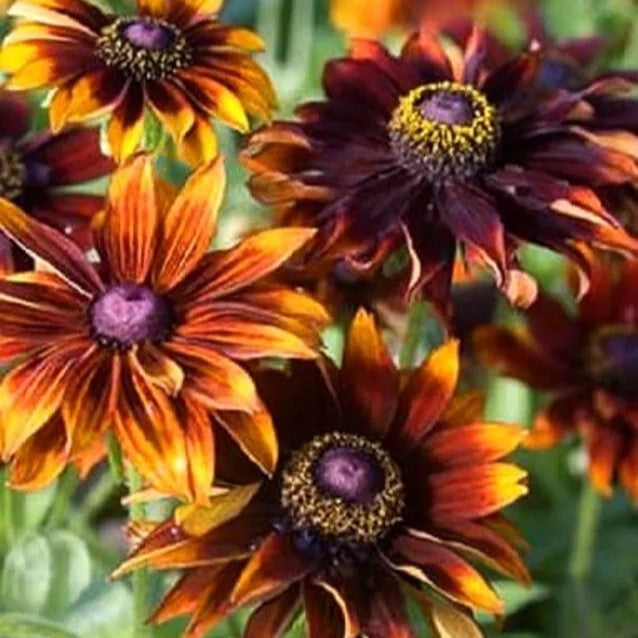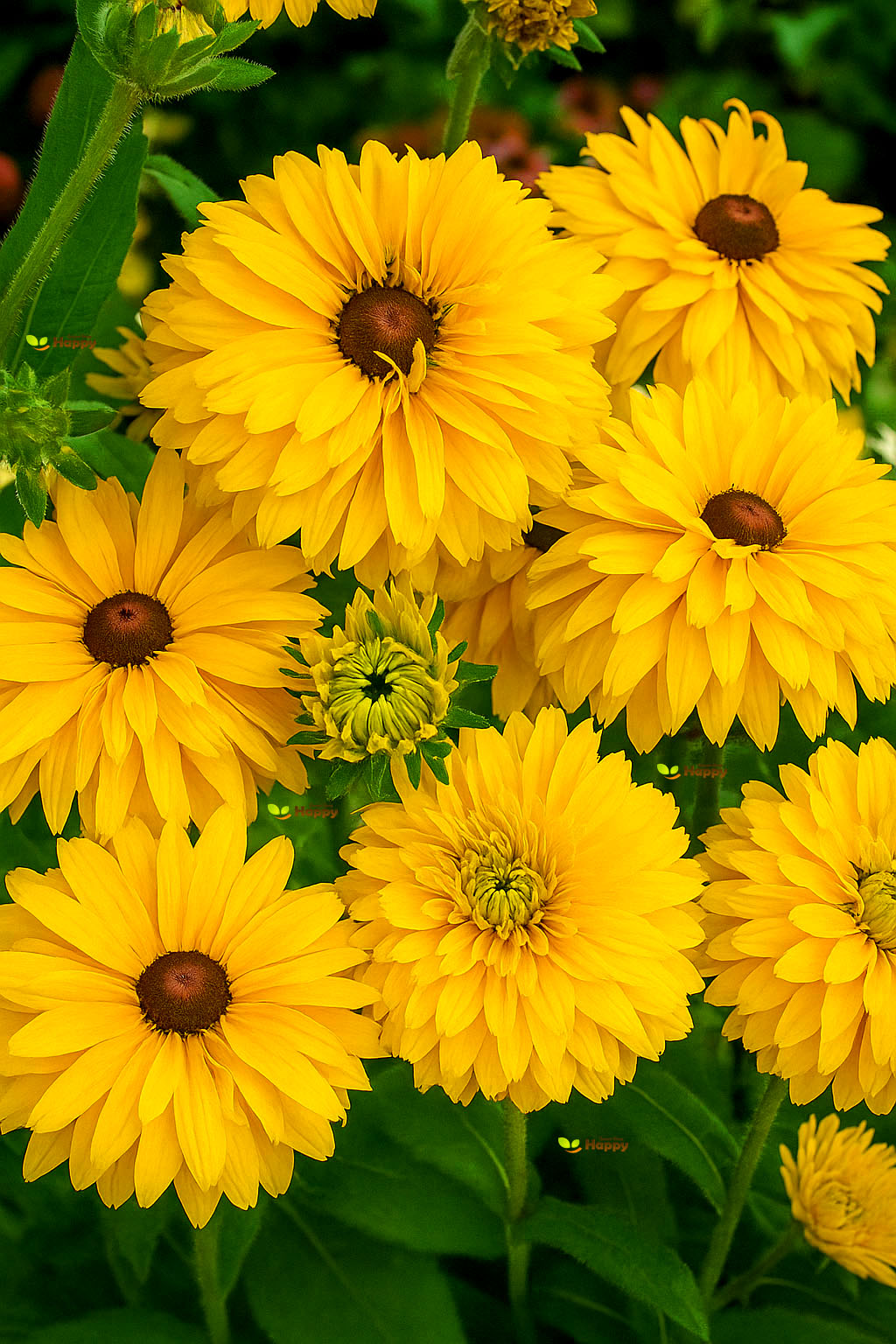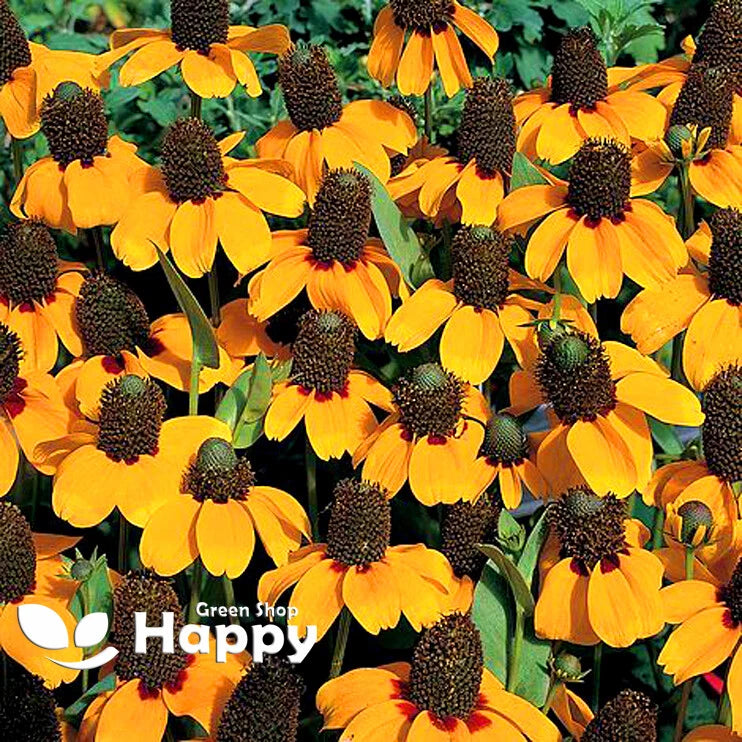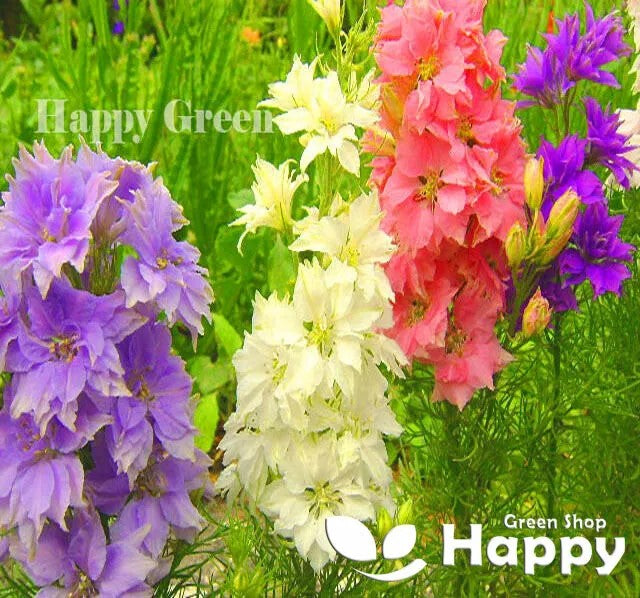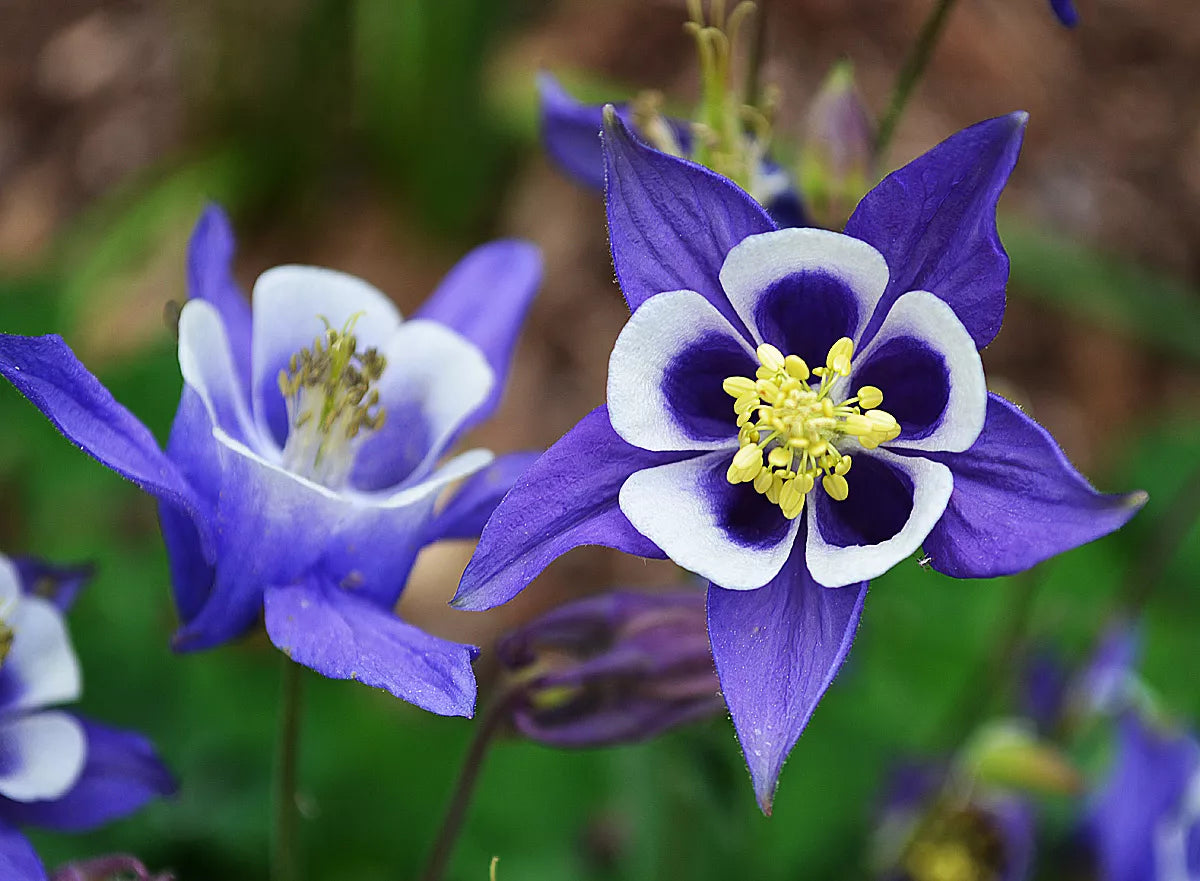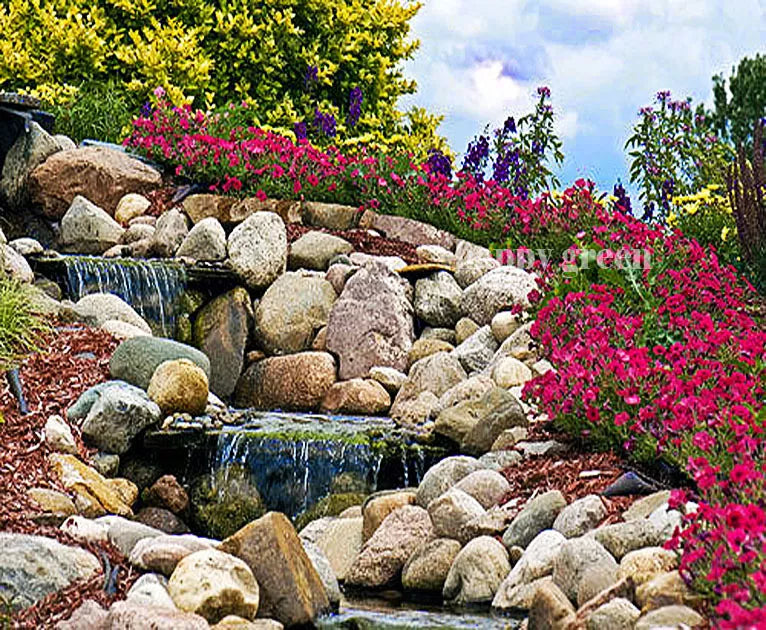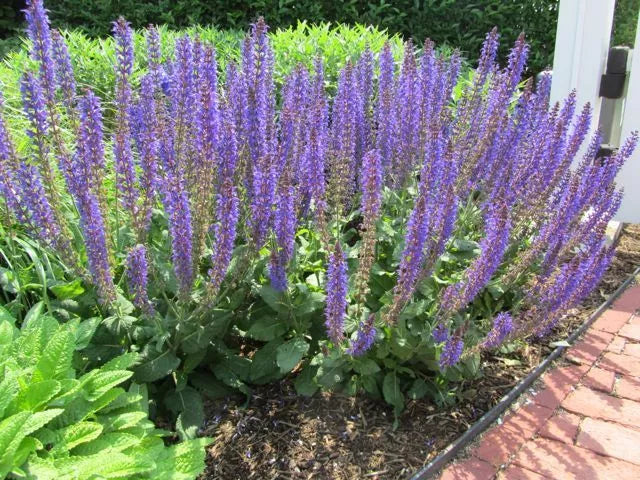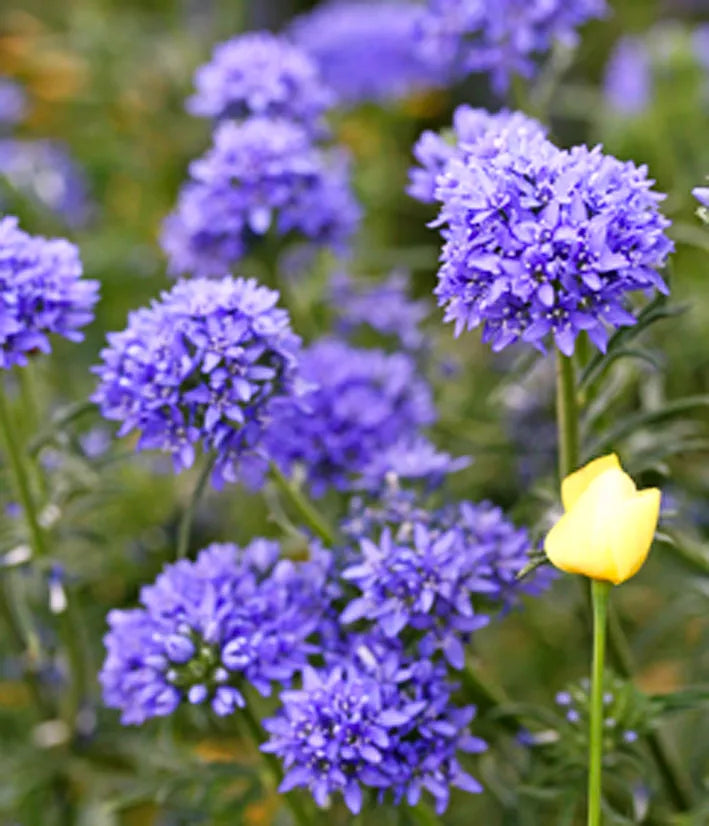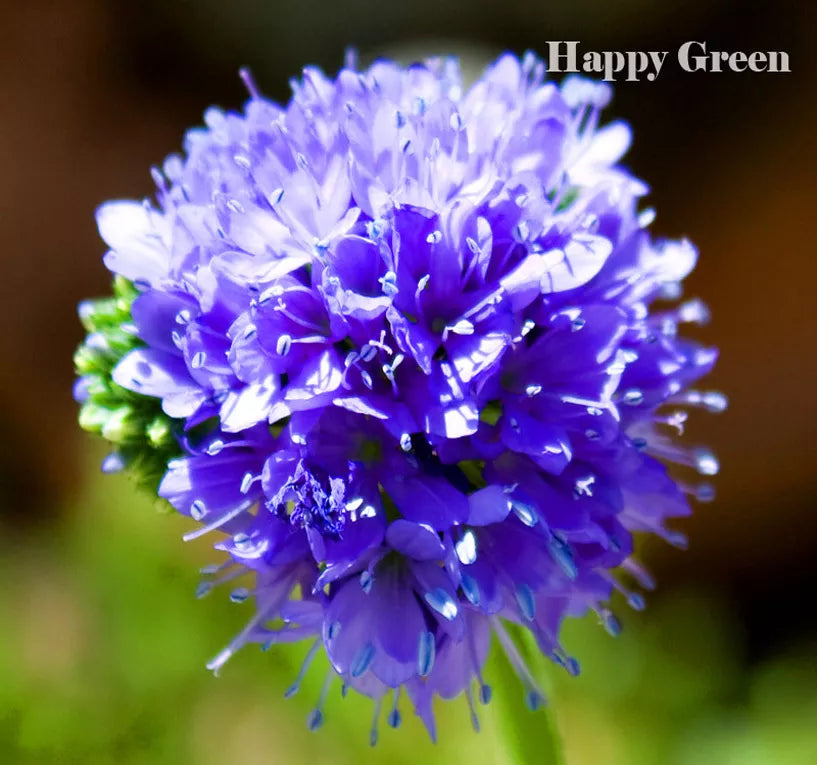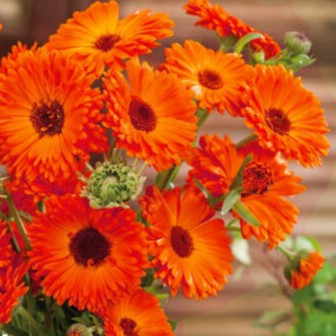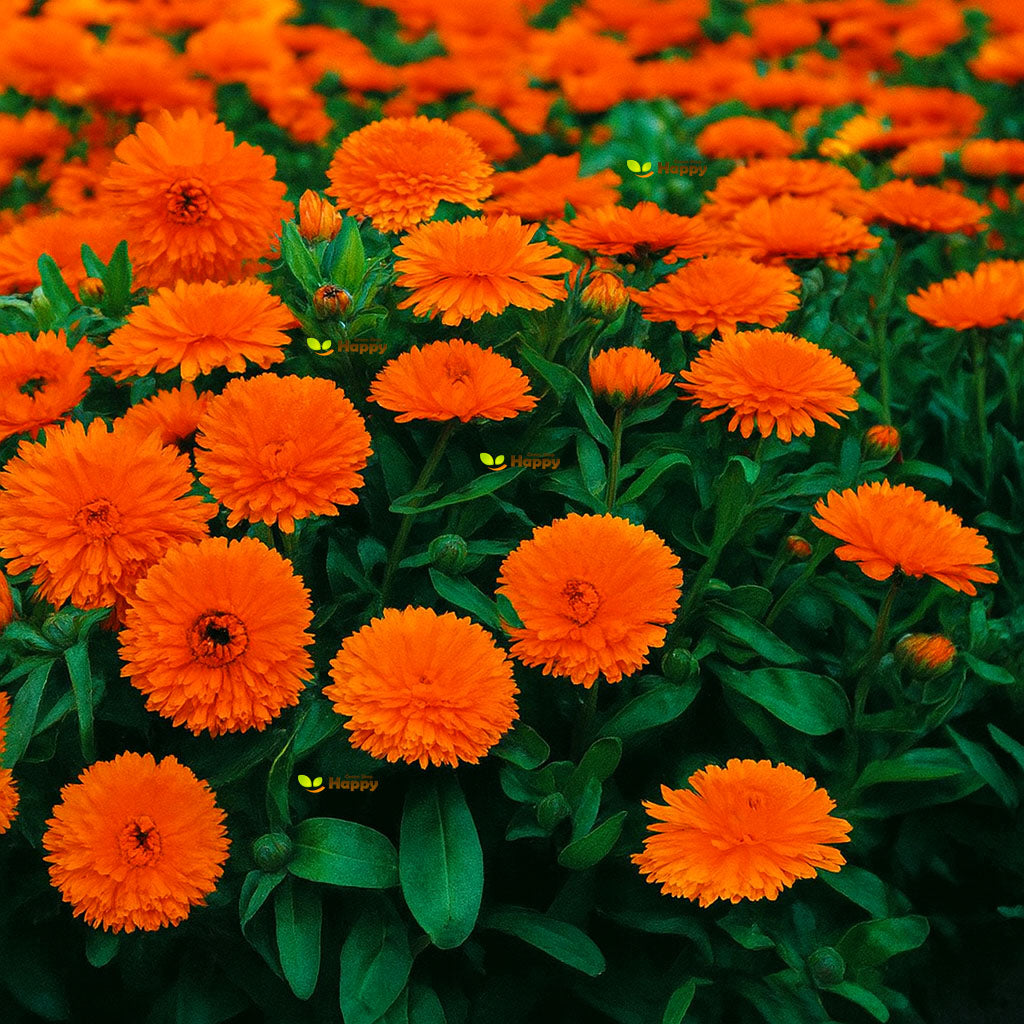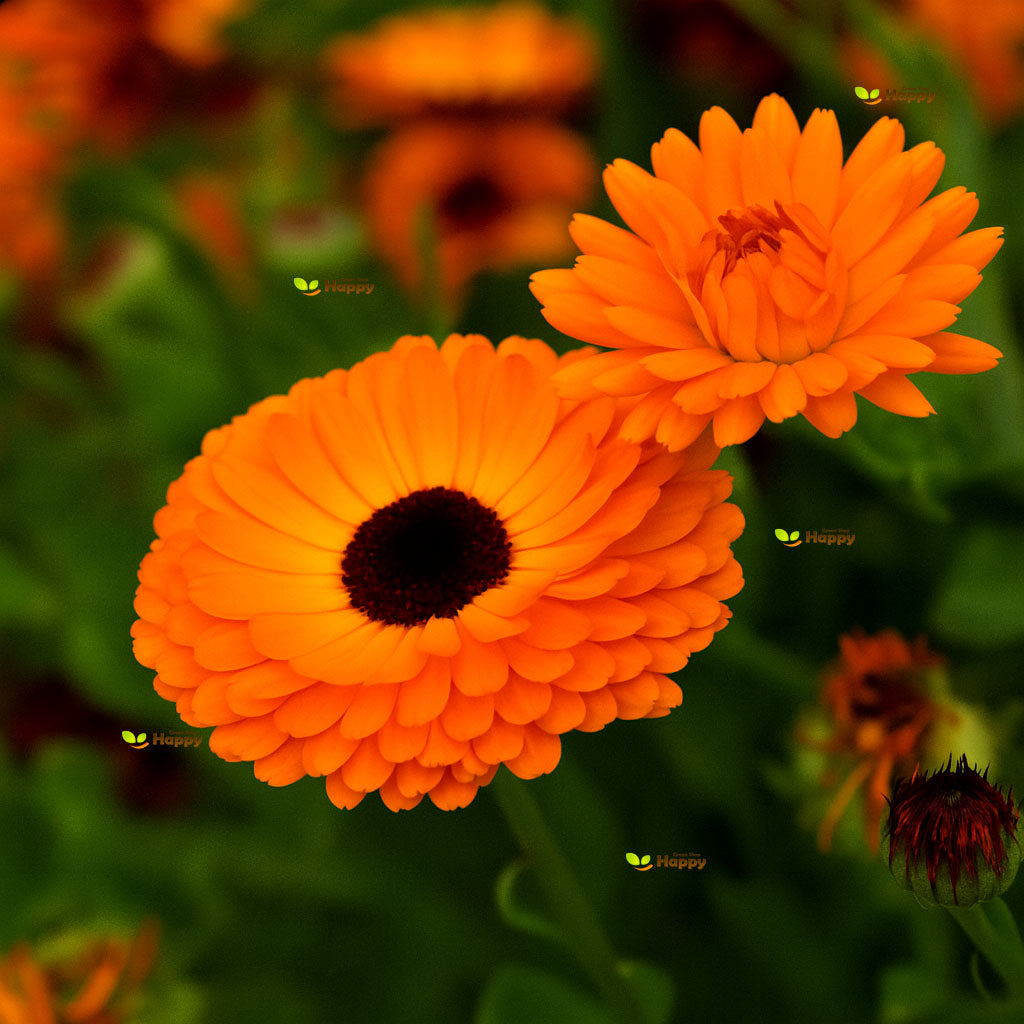Sort by:
211 products
211 products
Rudbeckia ‘Green Eyes’ Seeds (Rudbeckia hirta)
Rudbeckia ‘Green Eyes’ is a hardy annual with striking golden-yellow daisy-like flowers and a distinctive green central cone. Blooming from midsummer to autumn, it adds vibrant color to borders, cottage gardens, and wildflower meadows. Easy to grow, drought-tolerant, and pollinator-friendly, it’s perfect for low-maintenance, sunny gardens.
What Makes It Special
-
Golden-yellow petals with unique green centers
-
Long-lasting blooms that attract bees and butterflies
-
Hardy, low-maintenance, and drought-tolerant
Key Features
-
Botanical name: Rudbeckia hirta
-
Annual
-
Height: 60–80 cm
-
Bloom time: Midsummer to autumn
Ideal For
-
Borders, cottage gardens, and wildflower meadows
-
Pollinator-friendly plantings
-
Sunny, well-drained areas
Sowing
-
Sow indoors Feb–Apr or outdoors Apr–Jun
-
Cover seeds lightly with soil
-
Germination: 10–14 days at 18–22°C
-
Space seedlings 30–40 cm apart
-
Flowers the same year
Rudbeckia 'Autumn Pine' Seeds (Rudbeckia hirta)
Bring warm autumn tones to your garden with Rudbeckia 'Autumn Pine'. This hardy annual produces daisy-like blooms in rich golden-yellow shades with dark contrasting centers, perfect for creating a glowing late-summer display.
What Makes It Special
-
Cheerful golden-yellow blooms with striking centers
-
Long-lasting flowers from summer to first frost
-
Hardy and low-maintenance—ideal for beginners
Key Features
-
Botanical name: Rudbeckia hirta
-
Annual (sometimes short-lived perennial)
-
Height: 50–70 cm
-
Spread: 30–40 cm
-
Flowering: July–October
Ideal For
-
Cottage gardens and borders
-
Pollinator-friendly planting
-
Cut flowers and late-season color
Sowing
-
Sow indoors: February–April at 18–21°C
-
Lightly cover seeds; germination in 14–21 days
-
Transplant seedlings outdoors after frost in a sunny spot
-
Direct sow outdoors: April–May
Rudbeckia ‘Golden Daises’ Seeds (Rudbeckia hirta)
Bring cheerful sunshine to your garden with Rudbeckia ‘Golden Daises’ (Rudbeckia hirta). This hardy annual produces bright golden-yellow daisy-like flowers with dark centers, perfect for borders, beds, and cutting gardens. Easy to grow and long-flowering, it attracts pollinators and adds bold, eye-catching color from summer through autumn.
How to Grow
-
Sow seeds directly outdoors in spring after the last frost or indoors 6–8 weeks earlier.
-
Use well-drained soil in full sun.
-
Scatter seeds thinly and cover lightly with soil.
-
Keep soil moist until germination (7–14 days).
-
Thin seedlings to 25–30 cm apart once established.
-
Deadhead spent flowers to encourage continuous blooming.
Key Features
-
Bright golden-yellow daisy-like flowers with dark centers
-
Hardy annual, easy to grow and long-flowering
-
Ideal for borders, beds, and cutting gardens
-
Attracts bees, butterflies, and other pollinators
-
Adds bold, cheerful color to summer and autumn gardens
Ideal For
-
Flower borders and cottage gardens
-
Cutting gardens for fresh bouquets
-
Pollinator-friendly landscapes
-
Containers, patio planters, and naturalized plantings
Sowing
-
Best time: Spring outdoors or 6–8 weeks earlier indoors
-
Germination: 7–14 days
-
Sow thinly, cover lightly, and keep soil moist
-
Prefers full sun and well-drained soil
Quick Tip
-
Deadhead regularly to maintain vibrant blooms and extend the flowering season.
Rudbeckia ‘Clasping Coneflower’ – Seeds (Rudbeckia amplexicaulis)
The Clasping Coneflower is a hardy annual Rudbeckia that produces masses of golden-yellow petals marked with dark reddish-brown centers. With its long flowering season and striking daisy-like blooms, it’s ideal for brightening borders, meadows, and wildflower gardens. Heat- and drought-tolerant, it thrives in poor soils and attracts bees and butterflies.
Why Grow Clasping Coneflower?
-
Bright golden-yellow flowers with dark centers
-
Long flowering season, summer into autumn
-
Attracts pollinators
-
Easy to grow, drought-tolerant
Key Features
-
Type: Hardy annual
-
Height: 60–90 cm
-
Flowering: June–September
-
Position: Full sun, well-drained soil
-
Uses: Borders, meadows, wildflower gardens, cut flowers
Ideal For
-
Naturalistic and wildflower plantings
-
Low-maintenance garden borders
-
Pollinator-friendly spaces
Sowing & Growing
-
Sow outdoors: April–June directly into prepared soil
-
Germination: 10–20 days at 18–22°C
-
Thin seedlings to 20–30 cm apart
-
Deadhead for prolonged flowering
Rocket Larkspur Mix – Seeds (Delphinium ajacis)
The Rocket Larkspur Mix is a stunning annual that brings tall, elegant spikes of pink, blue, lavender, purple, and white blooms to the summer garden. A cottage garden classic, this mix produces stately flower spires that make a striking vertical accent in beds, borders, and cutting gardens. Its graceful flowers also make excellent, long-lasting cut blooms for fresh or dried arrangements.
Highlights
-
Tall, upright spires with a vibrant color mix
-
Cottage garden favorite with delicate, airy blooms
-
Excellent cut flower for bouquets and arrangements
-
Hardy annual – easy to grow and maintain
-
Attracts pollinators
Key Features
-
Botanical Name: Delphinium ajacis
-
Variety: Rocket Larkspur Mix
-
Seed Count: [Specify count if available]
-
Height/Spread: 75–120 cm tall, 30–40 cm spread
-
Position: Full sun, well-drained soil
-
Flowering Period: June – August
Perfect For
-
Cottage gardens and borders
-
Tall accents in mixed beds
-
Cutting gardens (fresh & dried flowers)
-
Pollinator-friendly landscapes
Sowing Instructions
-
Sow outdoors March–May or August–September for overwintering
-
Scatter thinly in prepared soil, cover lightly with soil
-
Germination: 14–28 days
-
Thin seedlings to 25–30 cm apart
-
Stake taller plants if needed for support
Rockery Garden Mixed Flower Seeds – 0.5 g
Bring charm and color to your rock garden with this delightful Rockery Garden Flower Mix. Specially selected compact, hardy flowers thrive in sunny, well-drained spots and fill rockeries, borders, and containers with continuous blooms all summer.
Why Grow "Rockery Garden Mix"
-
Low-growing, compact habit – perfect for rockeries
-
Vibrant color palette for a natural look
-
Drought-tolerant once established
-
Easy to grow and low-maintenance
Key Features
-
Type: Annual & perennial mix
-
Height: 15–30 cm
-
Flowering: June–September
-
Position: Full sun, well-drained soil
-
Uses: Rock gardens, borders, edging, containers
Ideal For
-
Rockeries & alpine gardens
-
Cottage-style plantings
-
Pollinator-friendly garden spots
-
Easy summer color with little effort
Sowing & Growing
-
Sow outdoors: April–May in prepared soil
-
Scatter thinly, cover lightly with soil
-
Germination: 14–21 days
-
Water lightly until established
-
Flowers from early summer onwards
Queen Anne’s Thimbles – Delicate Blue Blooms
Queen Anne’s Thimbles produces charming, compact clusters of pale blue flowers with a sweet, airy appearance. Perfect for borders, wildflower gardens, and pollinator-friendly spaces, these hardy annuals bring a touch of elegance to any garden.
What Makes It Special
-
Delicate, pale blue clustered flowers
-
Compact and airy growth habit
-
Long-flowering and easy to grow
-
Attracts bees and butterflies
Key Features
-
Annual plant
-
Grows 20–40 cm tall
-
Blooms from late spring to summer
-
Thrives in full sun and well-drained soil
-
Drought-tolerant and hardy
Ideal For
-
Garden borders and edges
-
Wildflower and meadow-style gardens
-
Pollinator-friendly gardens
-
Containers and cottage gardens
Sowing
-
Sow directly outdoors after last frost
-
Plant seeds 0.3–0.5 cm deep
-
Germination: 10–14 days at 18–22°C
-
Space 20–25 cm apart
-
Water moderately and provide full sun
Pot Marigold ‘Geisha Girl’ Seeds (Calendula officinalis)
A charming and easy-to-grow annual, Pot Marigold ‘Geisha Girl’ produces bright, double orange blooms with a cheerful, ruffled appearance. Hardy and long-flowering, this variety is perfect for borders, containers, and edible gardens, attracting pollinators while adding vibrant color from spring through autumn.
What Makes It Special
-
Double, ruffled orange blooms with a striking presence
-
Hardy and low-maintenance, ideal for novice gardeners
-
Attracts bees and butterflies, supports pollinator-friendly gardens
Key Features
-
Botanical name: Calendula officinalis
-
Hardy annual
-
Height: 30–40 cm (12–16 in)
-
Bloom time: Spring to autumn
Ideal For
-
Borders, beds, and edging
-
Containers, pots, and window boxes
-
Pollinator-friendly and edible gardens
Sowing
-
Sow indoors Feb–Apr or outdoors Mar–May
-
Cover lightly with soil and keep moist
-
Germination: 7–14 days at 15–20°C
-
Thin seedlings to 25–30 cm apart
-
Flowers the same year after sowing
Pot Marigold Dwarf ‘Sunset Buff’ – Apricot – 1,000 Seeds (Calendula officinalis)
The Dwarf Pot Marigold ‘Sunset Buff’ is a charming, compact variety producing apricot-peach blooms with soft golden undertones. Its warm pastel shades bring a unique elegance to beds, borders, and cottage gardens. Easy to grow and long-flowering, this hardy annual is also edible, with petals traditionally used to decorate salads or for natural dye.
Highlights
-
Distinctive apricot–buff blooms with golden tones
-
Compact, dwarf habit – perfect for pots and borders
-
Long flowering season from early summer to autumn
-
Attracts pollinators and beneficial insects
-
Edible petals for salads and herbal uses
Key Features
-
Botanical Name: Calendula officinalis
-
Variety: Dwarf ‘Sunset Buff’ (Apricot)
-
Seed Count: 1,000 seeds per pack
-
Height/Spread: 25–30 cm tall, compact growth
-
Position: Full sun, well-drained soil
-
Flowering Period: June – October
Perfect For
-
Bedding, borders, and cottage gardens
-
Patio pots and containers
-
Pollinator-friendly gardens
-
Edible flower displays and herbal uses
Sowing Instructions
-
Sow outdoors March–May or August–September for overwintering
-
Sow directly into soil, lightly cover seeds
-
Germination: 7–14 days
-
Thin seedlings to 20–25 cm apart
-
Deadhead regularly for prolonged flowering
Showing 63/211




